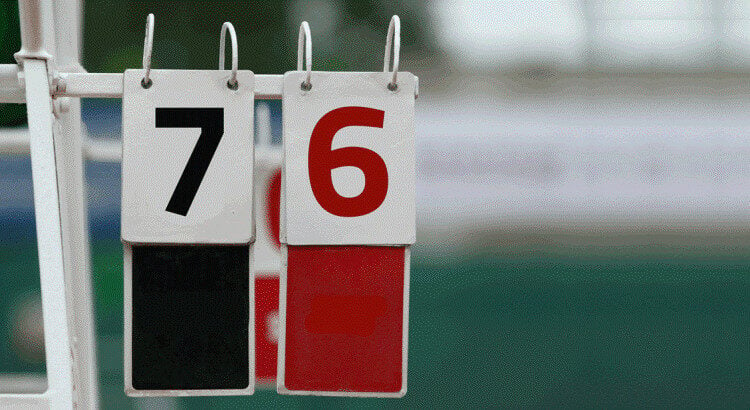Tennis is a sport that requires a lot of physical fitness, along with proper planning and mental strength. However, the thing that sets tennis apart is the one-of-a-kind tennis scoring system. Scoring in tennis can be puzzling, especially for people who are new to the sport. If you are keen to learn tennis, an occasional tennis viewer, or interested to learn how tennis works, knowing how the scoring works will help you a lot in understanding the game and help you follow tennis matches easily. Let’s help you understand the tennis scoring system in Nigeria, and their intricacies, along with international and Nigerian perspectives. And while you’re at it, discover 1xBet promo code today!
Tennis Scoring System Basics
Tennis scoring might challenge even the keenest sports aficionado, but it follows an ordered system. Like any rule in a game, it serves its purpose, and in the case of tennis, how other, more popular sports are organized.
Why Understanding Tennis Scoring Matters
The game is more engaging for tennis fans. Understanding the tennis scoring system enables the audience to appreciate the game’s rhythm. From the multiple levels of “love” to “15” and “deuce” in a game, the score is of great importance to the sport. In fact, even a five-set Grand Slam final can lose its fascination without proper scoring understanding.
Overview for Beginners in Nigeria
Nigerian players and fans of tennis might find the scoring system daunting. During local tournaments, school competitions, or televised matches, terms like “advantage,” “tiebreak,” and “set point” will be used. Understanding the basic concepts and terminology of tennis will enable new players and fans to appreciate the sport, especially with the increasing popularity of tennis in Africa.
How Tennis Differs from Other Sports (like Football or Basketball)
In contrast to football or basketball, which have a linear scoring (1 goal = 2 points, etc), tennis has a more hierarchical structure. Points translate to games, games to sets, and sets to a match. Additionally, tennis stands out among other games for the absence of a draw. One of the players will always have to win with a sufficient lead. This gives rise to tension-filled moments like deuces and tiebreaks.
The Basics of Tennis Scoring Terms
Let’s now focus on the main topic: scoring a tennis match starting with a single point and culminating with the match victory.

Points in a Game (Love, 15, 30, 40, Deuce, Advantage)
A game starts with ‘love’ (zero), moving through: 15, 30, 40 and game point. Once both players reach 40, it’s called deuce. A player wins by gaining a two point lead, one point for “advantage”, and one point to win. This two-dimensional point structure is one of the most distinct and unique aspects of tennis.
How to Win a Game
To win a game, a player must win at least four points and lead by a margin of at least two points. If the score hits deuce, players must fight for the 2 point lead.
From Game to Set: How Many Games in a Set?
A player wins a set after obtaining 6 games, but with 2 games lead. At a score of 6-6, a tiebreak is most often utilized to win the set. It is more common for a player to win 6 games (with a 2 game lead) to win the set.
Winning a Match: Best of 3 or 5 Sets
Each match follows a structure of either best-of-three sets or best-of-five sets, which is standard in most tournaments and men’s grand slam events respectively. A player is deemed as the match’s winner if he/she has won the stipulated number of sets predetermined by the specific match criteria.
Special Tennis Scoring Sets and Matches
Certain rules or regulations are set in tennis which only apply under certain conditions. These conditions are often rare and occur in different levels of the game. Let’s discuss how different regulations come in.
What Is a Tiebreak?
A tiebreak is a set to 6, meaning if either player has 6 they are in a set and the required 6 is met. A tiebreak is a faster way of scoring which reduces the chances of a set going on for a long period of time. These breaks are also filled with an uncountable amount of thrilling moments and can test the player’s mettle.
How Tiebreaks Are Scored
In a tiebreak, the scoring is done in a linear fashion by increments of one rather than the classical 15, 30, 40. Whoever is the first one to touch 7 wins with the criteria of 2 points higher than the opponent is the first winner of tiebreak as well as the set. If by any chance, both of the players touch 6 to 6 in the tiebreak, they will play further until the required 2 points are maintained.

What Happens After a Tiebreak Set?
After a tiebreak set, the next set is commenced in a normal fashion. In certain formats, especially the final sets in major tournaments, a super tiebreak may be used instead of a full set, depending on tournament guidelines.
Deuce and Advantage Explained
When both players reach forty, it is termed as deuce. The next point from deuce is termed as advantage. The player with advantage can win the next point and wins the game. If the player with advantage loses the point, the game returns to deuce and the cycle continues until one of the players wins by two.
Tennis Scoring Rule and Formats by Match Type
Not every match is the same. The format of the match being played influences how tennis scoring is divided.

Singles vs Doubles Scoring
In singles, one player faces off against another. In doubles, two players from each side share the court. While most of the game and set scoring is the same, doubles may introduce no-ad scoring and a super tiebreak as the final set.
Grand Slam Scoring Format
For men’s singles matches, it is best of five sets, while women’s singles is best of three sets. The same applies to women’s finals, while men’s finals are best of five sets. Other tournaments, such as the US Open and Australian Open, have tight sets which must be won by two games, while others use tiebreaks.
Mixed Doubles and Team Tennis Variations
Mixed doubles is one male and one female per team, and the third set is a super tiebreak. Team tennis tournaments such as The Laver Cup and World Team Tennis often introduce special rules, which may include timed sets, set limits, or team point systems.
Super Tiebreak in Modern Tennis
Super tiebreak is a newer concept, mostly replacing the third set in many formats. It is run to 10 points, and requires a two-point margin. This method is meant to keep both participants and the audience engaged as matches are more likely to be won and the player’s physical strain is lessened.
Common Tennis Terms You Should Know
The following terms are essential in learning the skills, strategies, and confidently play tennis. These terms help players understand the different point system in tennis compared to other sports like football or basketball.
Love
Love is a term that infers the value of zero. “15-love” means the player is still in the game, scoring one point while the other remains at zero. If a player is unscored out of 4, that means the player has 25% of the points to win a game, while the other has 0. In the de paume era, which influenced modern tennis, “love” was used the same way.
Break Point
Break Point in tennis occurs when the defender is just one point away from winning the game on their opponent’s serve. If they succeed, then the defender successfully “breaks” the opponent’s serve, which is a significant shift in momentum. It’s one of the most strategic points to win the game, especially when the score reaches a critical point like 40-40 or deuce.
Match Point
When a player is on the verge of winning a game, a point is awarded to them—thus, it is called a match point. This is usually a game-defining moment. If it happens after 40-40, the player must win two consecutive points to secure the match. In most cases, the first player to reach this stage and convert it becomes the winner of the set or even the match.
Walkover and Retirement
Walkover is the term when a player automatically advances because their opponent is unable to start the match. Retirement is when a player is unable to continue due to injury or illness mid-match. When this occurs, the first player to win six or meet the minimum games to win the set may be declared the winner by default, depending on how far the match progressed.
Serve and Volley Scenarios
Serve and volley is when a player serves and immediately approaches the net to try and volley the return. It is a rare approach in modern tennis, but it is a classic form of tennis. Such tactics were more common in the de paume days and require mastering the transition between three points or more to control the pace of a rally. Especially when the score reaches 40-40, it adds intense pressure on both players.
Tennis Scoring in Nigeria and African Tournaments
Tennis is gaining traction in Nigeria, as well as in the rest of the African continent. Let’s talk about the tennis scoring policies in these regions and how the different point system is applied locally.
How Local Competitions Are Scored
IIn Nigeria, the local competitions and tournaments, especially at the club or school level, mostly use the best-of-three set rule with no-ad scoring, or a shortened tiebreak set to save time. This promotes faster and more efficient play, which is ideal for tight schedules. When the score reaches 6-6, a tiebreak is often used, where the first player to win seven points (by a margin of two) wins the tiebreak, and thus becomes the winner of the set. This format helps players progress











